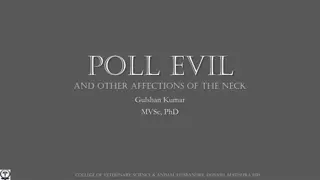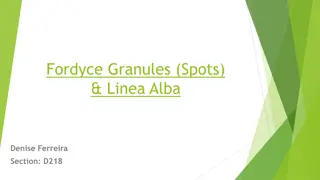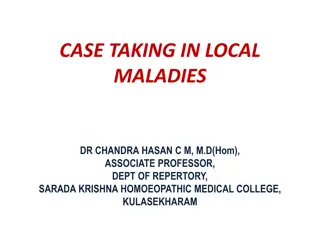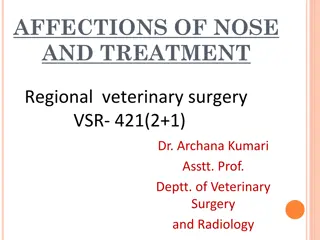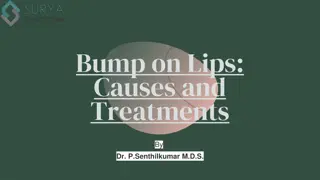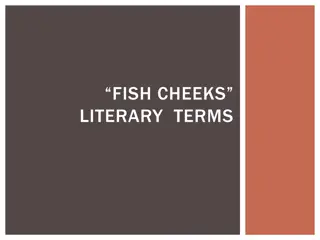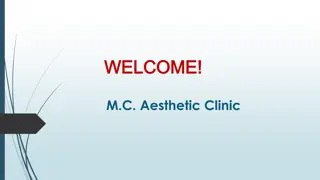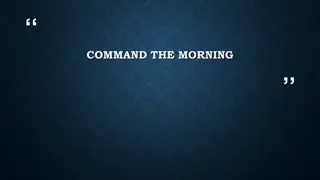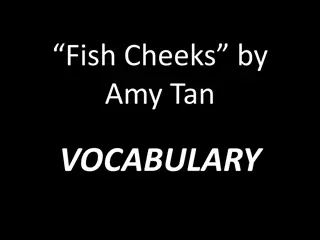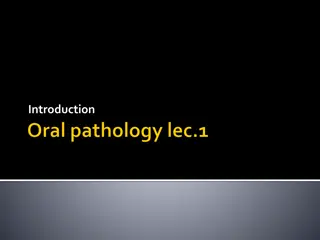Veterinary Approaches to Lips and Cheeks Afflictions
Addressing various conditions affecting the lips and cheeks of animals, including open wounds, hare lip, retraction, dermatitis, tumors, cysts, and more. Treatments range from surgical interventions to topical applications for ulceration and retraction.
Uploaded on Jul 20, 2024 | 0 Views
Download Presentation

Please find below an Image/Link to download the presentation.
The content on the website is provided AS IS for your information and personal use only. It may not be sold, licensed, or shared on other websites without obtaining consent from the author.If you encounter any issues during the download, it is possible that the publisher has removed the file from their server.
You are allowed to download the files provided on this website for personal or commercial use, subject to the condition that they are used lawfully. All files are the property of their respective owners.
The content on the website is provided AS IS for your information and personal use only. It may not be sold, licensed, or shared on other websites without obtaining consent from the author.
E N D
Presentation Transcript
Affections of the Lips and Cheek and Their Treatment Regional Veterinary Surgery VSR-421(2+1) Dr. Archana kumari Asstt. Prof. Deptt. of Veterinary Surgery And Radiology
AFFECTION OF LIPS AND CHEEKS 1 Open wounds of lips and cheeks 2 Hare lip 3 Retraction of lip 4 Dermatitis of lips in lamb 5 Ulceration of lip in cat 6 Tumors 7 Cysts 8 Paralysis of the facial nerve 9 Foreign bodies in the mouth 10 Scalds
Hare lip (Chiloschisis) Itis a congenital disorder Rarely observed in domestic and pet animals. Condition is associated with running of cleft in upper lip into nostril. May be unilateral or bilateral and may exist alone or be accompanied by cleft palate or split jaw. There is difficulty in feeding and if the nostril and hard palate are affected, the milk may run through the nostrils. .
Treatment this condition is not promising and only may attempt to satisfy the sentiments of owners. Surgical operation involves incising a thin slice of tissue from lip edges and subsequent suturing of both skin edges with non- absorbable suture materials
ULCERATION OF THE LIP Itis occasionally encountered in cat where a considerable portion of the lip is damaged exposing the teeth and gums. It starts at the free border, in the centre or to one side of the middle line. causes pain and toxaemia followed by emaciation and death. Treatment: This condition is directed to isolate the animal and application of tincture iodine or the stick of lunar caustic at the ulcerated site.
Retraction of the lip develops due to cicatrical contraction caused by injury and subsequent development of much fibrous tissue between the lip and gum that prevents its meeting the other one. Treatment of this condition includes: Surgical incision between the gum and lip for greater mobility of lip and allow it to move down or up. Some new tissues may be removed by making two parallel incision transversely between the lip and jaw and finally excising the intervening portion.
Tumours Palilloma or warts are the commonly encountered neoplasm on the lip of horse and dog multiple palillomas are formed in the buccal mucous membranes and gums in dog, which is contagious in nature. malignant tumour like epithelioma frequently develops on the lip of the dogs. It starts as a small swelling, which soon ulcerates and extends rapidly into the surrounding area involving bone also. The neighbouring lymphatic glands are also affected. There is salivation and usually an offensive foul smell comes from the mouth due to decomposition or food adhered to the affected area and discharges from the tumorous mass.
Treatment : Surgical excision of large warts and subsequent application of astringent mouth wash. Small epithelioma confined to the lip only may be excised by a V-shaped incision. Well-developed epithelioma should not be excised as there is a chance of recurrence. Radiotherapy may be tried for such situation with promising results in localized tumours.
Traumatic lesions Trauma is check occurs most commonly in cattle, dog, and horse but is also found in other animals. The cheek, jowl and lip may be wounded by the sharp molars or incisor teeth, fragments of fractured bone of jaw, bits, foreign bodies accidentally ingested with the food such as nails, fish-hooks, needles etc. The wounds may be complicated when important vessel or nerve is injured. Signs The animals feel difficulty in taking feed. Trickles of saliva from the mouth. The dogs rub his paws against the jaw to dislodge the foreign object. Trauma due to long teeths
Treatment Mostly, ordinary wounds heal rapidly and spontaneously, only to clean the mouth after feeding is necessary. A foreign body must be removed and discontinue to offending bit. Food requiring little mastication should be provided. Haemorrhage, if any from artery must be ligated.




